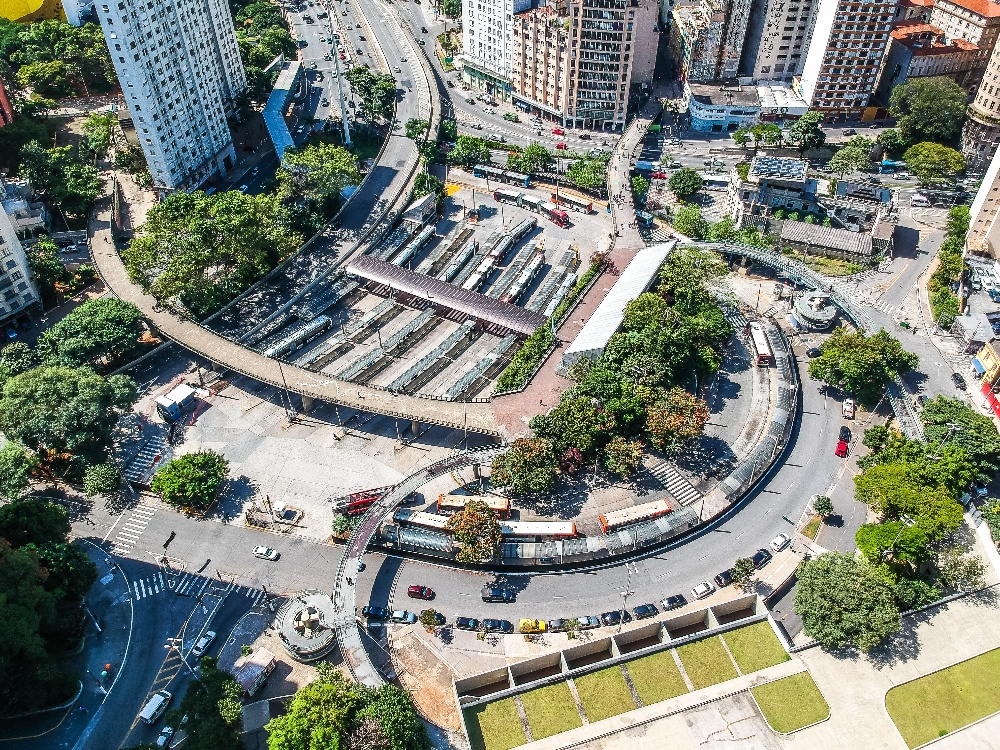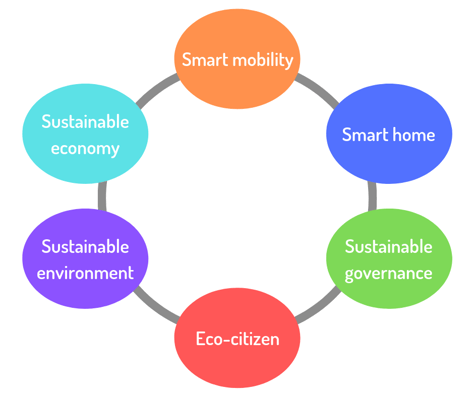In 2005, the concept of "smart city" was first introduced by Bill Clinton, who, through his foundation, commissioned a decongestion plan for the cities of San Francisco, Seoul and Amsterdam in order to "reduce CO2 emissions and allow citizens and local communities to save time and money". The perception of the smart city is often caricatured, where the fantastic comes to the rescue of everyday life: it predicts urban behaviour, it optimizes the energy consumption or develops intelligent mobility. Those are the subjects that will be discussed in this article.
The Smart City concept began to take shape in South Korea in the early 2000's with the U-Korea project. The aim was to provide the city of Sondgo with a whole range of technological facilities, including a high-quality Wi-Fi connection that would be accessible and free of charge to all residents, not to mention the other excessively high-tech connections that have made Sondgo a "smart city".
So what is a Smart City? The term smart city is given to a city that integrates information and communication technologies (ICT) to improve the quality and performance of urban services such as energy, transportation and public services in order to reduce resource consumption, waste and overall costs. The overriding objective of a smart city is to improve the quality of life of its citizens through smart technologies.
Making a city "intelligent" therefore requires reassess the purpose of the services offered to its users, to conceive the city differently in an integrated and participatory approach.
Several actors must be taken into account in the construction of a "smart" strategy, including startups, which are an essential source of inspiration and can play a leading role in smart cities projects.
However, given the current quality of our travel and consumption patterns, it is becoming increasingly urgent that the objective of a smart city is to reduce its environmental impact by using the most efficient and environmentally friendly technologies.

Smart cities are characterised by organizational, technological and societal changes; and these changes are driven by the desire of these cities to be part of the fight against climate change. Smart cities thus seek to combine social, cultural and environmental pillars through a systemic approach that reconciles participatory governance and enlightened management of natural resources in order to meet the needs of institutions, businesses and citizens.
There are many terms to describe a smart city: digital city, green city, connected city, eco-city, sustainable city. How can you differentiate them from one another? What are the characteristics of a smart city?
Smart cities can be classified according to six main criteria: a smart economy, smart mobility, a smart environment, smart people, a smart lifestyle and a smart governance.

To become intelligent, today's cities have to develop new optimized services in all areas: in means of transportation(relieving traffic congestion), in environmental protection (waste treatment, recycling, renewable energies); for responsible urbanization and intelligent housing (building intelligent buildings to facilitate and improve energy management for example).
Thus, the city must develop the capacity to explore new technological solutions but also new ways of operating and governing. Two types of intelligence must be developed to achieve this:
The citizen is a central actor of the smart city, which is why the city must be built according to the concerns of the inhabitants in the area, although many issues still rest unsolved. Here are a few example questions on the problems that need clarity:
To sum up, new information and communication technologies are a major asset for developing a smart city since they enable administrators to make effective decisions and better urban management by obtaining and analyzing key information.